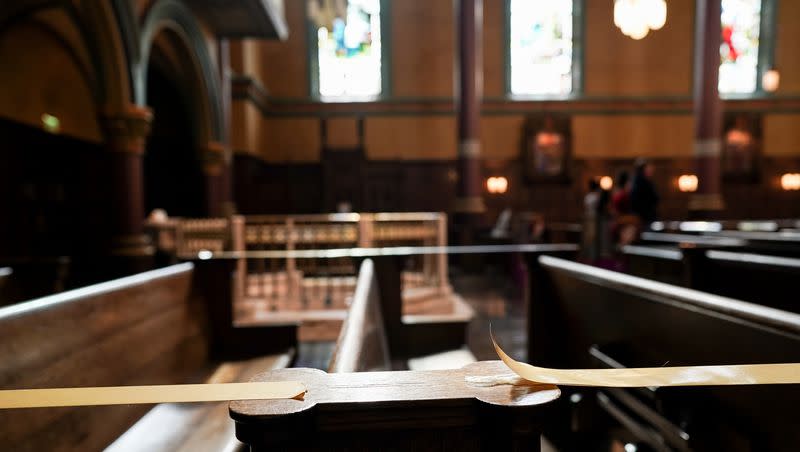The pandemic changed many churches. But did it change church attendance?

It’s hard to overstate the COVID-19 pandemic’s impact on houses of worship.
Almost overnight, churches, synagogues, mosques and other gathering spaces had to revamp their weekly routines, first by creating virtual service options and then by finding ways to keep in-person worshippers masked and spread out.
“I do kind of laugh every once in a while and think, ‘OK, God. Thank you very much. We’ll just keep going,’” said the Rev. Martin Diaz, rector of the Cathedral of the Madeleine in Salt Lake City, about the pandemic’s many challenges to the Deseret News in May 2020.
But surprisingly, given the twists and turns faith leaders like the Rev. Diaz had to weather, the pandemic appears to have had almost no effect on Americans’ worship habits.
The share of U.S. adults who say they generally attend religious services at least once per month dropped just three percentage points from 2019 to 2022, from 33% to 30%, according to a new Pew Research Center survey.
“We can pretty clearly say from this data that there were no major shockwaves from the pandemic that totally threw off attendance from the trajectory it was already on,” said Michael Rotolo, a research associate at Pew.
Related
In other words, if someone were to look at a chart of church attendance rates over the past few years with no knowledge of the pandemic, they’d struggle to pinpoint when the unprecedented, earth-shattering event had occurred.
“Thirty-three to 30% percent is a 3 percentage point drop, meaning 1 percentage point per year. That’s right on trend with the declines we were already seeing in attendance” before the pandemic, Rotolo said.
Religion and the pandemic
Pew’s new survey is especially notable when you consider the kinds of faith-related predictions that circulated three years ago. Many religion experts forecast some kind of extreme outcome, whether that be a major drop-off in religious engagement due to church closures or a major rise tied to people’s anxiety about what the future would hold.
In reality, Americans’ pre-pandemic religious routines mostly remained in place, even as the world around them dramatically changed. The share of religiously unaffiliated U.S. adults who say they attend worship services at least monthly rose just 1 percentage point from 2019 to 2022, from 3% to 4%.
“Part of what explains the stability (in the overall trend line) is the large number of people who weren’t attending before the pandemic who still don’t attend,” Rotolo said.
Related
Stability has also been the name of the game in Pew’s separate, also repeated question about Americans’ actual behavior during the month before they were contacted by researchers. (For this question, respondents were asked specifically about their church attendance habits in the past month instead of about their habits in general.)
In the five Pew surveys on religious attendance taken since the start of the pandemic, the share of Americans who said they’d participated in religious services in some way in the past month barely shifted.
In July 2020, it was 41%. In the most recent survey, conducted in November 2022, it was 40%.
“The number has hardly budged,” Rotolo said.
The rise — and fall — of virtual worship services
What has changed over the course of the pandemic is the percentage of U.S. adults who only take part in virtual worship options.
In July 2020, 27% of Americans only watched religious services online or on TV in the past month. By November 2022, that figure had dropped to 12%.
In the months ahead, Rotolo hopes to dig even deeper into the numbers to determine what nuances lie behind the stable overall trends. Because many Americans participated in each of the five pandemic-era surveys, it will be possible for researchers to zoom in on how their individual worshipping habits changed over time, he said.

